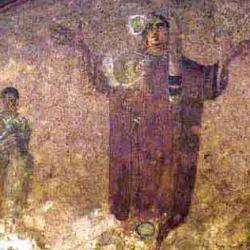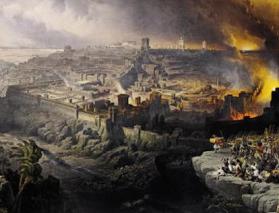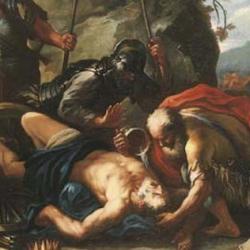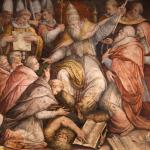Plato said that purification is a science of division. So is creation. In Genesis, God forms the formless by separating. He divides (badal) light from darkness to form a temporal structure of evenings and mornings (Genesis 1:4) and waters from water to create a vertical spatiality (Genesis 1:6–7). He delegates the creative work of dividing day and night to the heavenly bodies, which rule and signify in part by separating (Genesis 1:14, 18).
After Genesis 1, the Hebrew verb badal isn’t used again until Exodus, when the Lord instructs Moses to erect a veil as a “divider” between the holy place and the most holy (Exodus 26:33). It’s another creative act, delegated this time to a human being: By erecting the firmament boundary between holy and most holy, Moses re-forms the world. A world that previously was not mapped by the separation of holy and profane now is mapped by that separation.
Torah requires not only the creative division of space, but the creative division of persons. Israel is separated (badal) from the peoples as Yahweh’s own (Leviticus 20:24, 26; cf. 1 Kings 8:53). Within Israel, Levites are separated from the other tribes (Numbers 8:14), and priests are distinguished from the rest of the Levites (Numbers 16:9).
Priests are guardians of created order because they are responsible for creating and maintaining the divisions between holy and profane, unclean and clean (Leviticus 10:10). They create holiness boundaries by rites of consecration; they create purity boundaries by pronouncing people clean or unclean, like Yahweh forming the creation by word.
Chronicles indicates yet anther recreative division. 1 Chronicles 23:13 repeats Torah’s claim that the sons of Aaron were divided off (badal) as most holy. Like the veil separating the holy place from the most holy place, Yahweh’s choice of Aaron is a separating choice, a division within the holy people that consecrates one family as more intensely holy, as most holy.
But 1 Chronicles 25:1 presents an innovation. Within the tribe of Levi, David and the commanders of the hosts set apart (badal) the sons of Asaph, Heman, and Jeduthun for the ministry of song. Within Chronicles, only the priests and singers are “set apart,” a datum that calls attention to the parallels of priestly and musical ministry, of sacrifice and the sacrifice of praise. More, the division of singers from the rest of the Levites is yet another fresh creation within the new-creation that is Israel. Forming a specialized company of singers and musicians at the heart of the temple repeats the first moments of creation, when the morning stars sang together.














